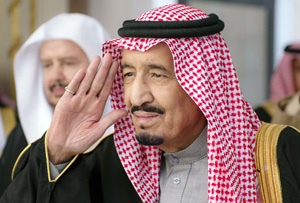New Delhi, March 31: Saudi Arabia has assured India full assistance in safe evacuation of Indians stranded in strife-hit Yemen as Minister of State for External Affairs V.K. Singh flew to Djibouti on Tuesday to oversee evacuation efforts.
Saudi King Salman bin Abdul Aziz Al Saud spoke to Prime Minister Narendra Modi on Monday night and assured him of his "full attention to the safety of Indians in Yemen and all possible assistance for their early and safe evacuation".
The Saudi monarch called up Modi at 9.30 p.m. The prime minister shared his "deep concern about the safety and welfare of approximately 4,000 Indians in Yemen". He also briefed King Salman on India's evacuation plan and requested him for support and cooperation in it.
The Saudi monarch "recalled the strong and close relations between India and Saudi Arabia and assured the prime minister of his full attention to the safety of Indians".
Modi expressed his gratitude "and conveyed his best wishes to His Majesty for a quick resolution of the challenges in the region and early restoration of peace and stability under his leadership. The prime minister also reaffirmed his commitment to further strengthening India's close relations with Saudi Arabia," said a statement.
On Monday, India evacuated 400 Indians from Aden through sea route by a local craft which took them to Djibouti. In Djibouti, India has stationed five diplomats, including three senior officials of the external affairs ministry, to assist in the efforts.
V.K. Singh is to oversee the evacuation operations at Djibouti from where Indians are to be flown back home.
The Indian Air Force has been asked to deploy two Globemaster aircraft to ferry those in Djibouti to India. The Air India has stationed two flights in Muscat.
An Indian Navy ship INS Sumitra is also in the region. The navy is pressing into service two more ships -- INS Mumbai and INS Tarkash. Two passenger liners with a total capacity of 1,100 are travelling towards Yemen and would reach there in four-five days, external affairs ministry spokesperson Syed Akbaruddin said on Monday.
India is also in touch with regional leaders and will seek their assistance in this difficult situation, he said.
The Saudi Arabia-led aerial bombing campaign against Houthi rebels in Yemen continued for the fifth day on Monday. The air strikes are aimed at forcing Houthi rebels to hand power back to President Abed Rabbu Mansour Hadi.
Around 40 people were killed on Monday and 200 wounded in an air strike at al-Mazraq camp.





Comments
Add new comment